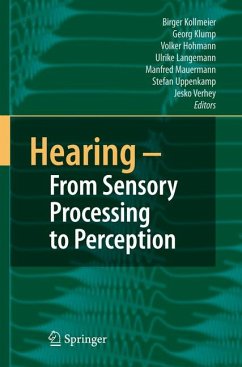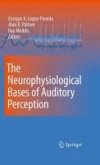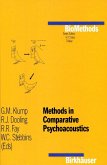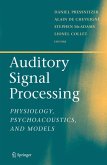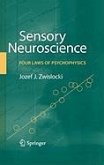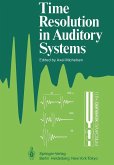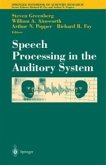Hearing - From Sensory Processing to Perception (eBook, PDF)
Redaktion: Kollmeier, B.; Verhey, J.; Uppenkamp, S.; Mauermann, M.; Langemann, U.; Hohmann, V.; Klump, G.
274,95 €
274,95 €
inkl. MwSt.
Sofort per Download lieferbar

137 °P sammeln
274,95 €
Als Download kaufen

274,95 €
inkl. MwSt.
Sofort per Download lieferbar

137 °P sammeln
Jetzt verschenken
Alle Infos zum eBook verschenken
274,95 €
inkl. MwSt.
Sofort per Download lieferbar
Alle Infos zum eBook verschenken

137 °P sammeln
Hearing - From Sensory Processing to Perception (eBook, PDF)
Redaktion: Kollmeier, B.; Verhey, J.; Uppenkamp, S.; Mauermann, M.; Langemann, U.; Hohmann, V.; Klump, G.
- Format: PDF
- Merkliste
- Auf die Merkliste
- Bewerten Bewerten
- Teilen
- Produkt teilen
- Produkterinnerung
- Produkterinnerung

Bitte loggen Sie sich zunächst in Ihr Kundenkonto ein oder registrieren Sie sich bei
bücher.de, um das eBook-Abo tolino select nutzen zu können.
Hier können Sie sich einloggen
Hier können Sie sich einloggen
Sie sind bereits eingeloggt. Klicken Sie auf 2. tolino select Abo, um fortzufahren.

Bitte loggen Sie sich zunächst in Ihr Kundenkonto ein oder registrieren Sie sich bei bücher.de, um das eBook-Abo tolino select nutzen zu können.
Hearing - From Sensory Processing to Perception presents the papers of the latest "International Symposium on Hearing," a meeting held every three years focusing on psychoacoustics and the research of the physiological mechanisms underlying auditory perception. The proceedings provide an up-to-date report on the status of the field of research into hearing and auditory functions.
- Geräte: PC
- ohne Kopierschutz
- eBook Hilfe
- Größe: 16.34MB
Andere Kunden interessierten sich auch für
![The Neurophysiological Bases of Auditory Perception (eBook, PDF) The Neurophysiological Bases of Auditory Perception (eBook, PDF)]() The Neurophysiological Bases of Auditory Perception (eBook, PDF)161,95 €
The Neurophysiological Bases of Auditory Perception (eBook, PDF)161,95 €![Methods in Comparative Psychoacoustics (eBook, PDF) Methods in Comparative Psychoacoustics (eBook, PDF)]() Methods in Comparative Psychoacoustics (eBook, PDF)73,95 €
Methods in Comparative Psychoacoustics (eBook, PDF)73,95 €![Auditory Signal Processing (eBook, PDF) Auditory Signal Processing (eBook, PDF)]() Auditory Signal Processing (eBook, PDF)161,95 €
Auditory Signal Processing (eBook, PDF)161,95 €![Sensory Neuroscience: Four Laws of Psychophysics (eBook, PDF) Sensory Neuroscience: Four Laws of Psychophysics (eBook, PDF)]() Jozef J. ZwislockiSensory Neuroscience: Four Laws of Psychophysics (eBook, PDF)113,95 €
Jozef J. ZwislockiSensory Neuroscience: Four Laws of Psychophysics (eBook, PDF)113,95 €![Time Resolution in Auditory Systems (eBook, PDF) Time Resolution in Auditory Systems (eBook, PDF)]() Time Resolution in Auditory Systems (eBook, PDF)73,95 €
Time Resolution in Auditory Systems (eBook, PDF)73,95 €![Speech Processing in the Auditory System (eBook, PDF) Speech Processing in the Auditory System (eBook, PDF)]() Speech Processing in the Auditory System (eBook, PDF)113,95 €
Speech Processing in the Auditory System (eBook, PDF)113,95 €![Active Processes and Otoacoustic Emissions in Hearing (eBook, PDF) Active Processes and Otoacoustic Emissions in Hearing (eBook, PDF)]() Active Processes and Otoacoustic Emissions in Hearing (eBook, PDF)113,95 €
Active Processes and Otoacoustic Emissions in Hearing (eBook, PDF)113,95 €-
-
-
Hearing - From Sensory Processing to Perception presents the papers of the latest "International Symposium on Hearing," a meeting held every three years focusing on psychoacoustics and the research of the physiological mechanisms underlying auditory perception. The proceedings provide an up-to-date report on the status of the field of research into hearing and auditory functions.
Hinweis: Dieser Artikel kann nur an eine deutsche Lieferadresse ausgeliefert werden.
Dieser Download kann aus rechtlichen Gründen nur mit Rechnungsadresse in A, B, BG, CY, CZ, D, DK, EW, E, FIN, F, GR, HR, H, IRL, I, LT, L, LR, M, NL, PL, P, R, S, SLO, SK ausgeliefert werden.
Hinweis: Dieser Artikel kann nur an eine deutsche Lieferadresse ausgeliefert werden.
Produktdetails
- Produktdetails
- Verlag: Springer Berlin Heidelberg
- Seitenzahl: 565
- Erscheinungstermin: 21. September 2007
- Englisch
- ISBN-13: 9783540730095
- Artikelnr.: 37372046
- Verlag: Springer Berlin Heidelberg
- Seitenzahl: 565
- Erscheinungstermin: 21. September 2007
- Englisch
- ISBN-13: 9783540730095
- Artikelnr.: 37372046
- Herstellerkennzeichnung Die Herstellerinformationen sind derzeit nicht verfügbar.
Cochlea/Peripheral Processing.- Influence of Neural Synchrony on the Compound Action Potential, Masking, and the Discrimination of Harmonic Complexes in Several Avian and Mammalian Species.- A Nonlinear Auditory Filterbank Controlled by Sub-band Instantaneous Frequency Estimates.- Estimates of Tuning of Auditory Filter Using Simultaneous and Forward Notched-noise Masking.- A Model of Ventral Cochlear Nucleus Units Based on First Order Intervals.- The Effect of Reverberation on the Temporal Representation of the F0 of Frequency Swept Harmonic Complexes in the Ventral Cochlear Nucleus.- Spectral Edges as Optimal Stimuli for the Dorsal Cochlear Nucleus.- Psychophysical and Physiological Assessment of the Representation of High-frequency Spectral Notches in the Auditory Nerve.- Pitch.- Spatio-Temporal Representation of the Pitch of Complex Tones in the Auditory Nerve.- Virtual Pitch in a Computational Physiological Model.- Searching for a Pitch Centre in Human Auditory Cortex.- Imaging Temporal Pitch Processing in the Auditory Pathway.- Modulation.- Spatiotemporal Encoding of Vowels in Noise Studied with the Responses of Individual Auditory-Nerve Fibers.- Role of Peripheral Nonlinearities in Comodulation Masking Release.- Neuromagnetic Representation of Comodulation Masking Release in the Human Auditory Cortex.- Psychophysically Driven Studies of Responses to Amplitude Modulation in the Inferior Colliculus: Comparing Single-Unit Physiology to Behavioral Performance.- Source Segregation Based on Temporal Envelope Structure and Binaural Cues.- Simulation of Oscillating Neurons in the Cochlear Nucleus: A Possible Role for Neural Nets, Onset Cells, and Synaptic Delays.- Forward Masking: Temporal Integration or Adaptation?.- The Time Course of Listening Bands.- Animal Communication.- Frogs Communicate with Ultrasound in Noisy Environments.- The Olivocochlear System Takes Part in Audio-Vocal Interaction.- Neural Representation of Frequency Resolution in the Mouse Auditory Midbrain.- Behavioral and Neural Identification of Birdsong under Several Masking Conditions.- Intensity Representation.- Near-Threshold Auditory Evoked Fields and Potentials are In Line with the Weber-Fechner Law.- Brain Activation in Relation to Sound Intensity and Loudness.- Duration Dependency of Spectral Loudness Summation, Measured with Three Different Experimental Procedures.- Scene Analysis.- The Correlative Brain: A Stream Segregation Model.- Primary Auditory Cortical Responses while Attending to Different Streams.- Hearing Out Repeating Elements in Randomly Varying Multitone Sequences: A Case of Streaming?.- The Dynamics of Auditory Streaming: Psychophysics, Neuroimaging, and Modeling.- Auditory Stream Segregation Based on Speaker Size, and Identification of Size-Modulated Vowel Sequences.- Auditory Scene Analysis: A Prerequisite for Loudness Perception.- Modulation Detection Interference as Informational Masking.- A Paradoxical Aspect of Auditory Change Detection.- Human Auditory Cortical Processing of Transitions Between 'Order' and 'Disorder'.- Wideband Inhibition Modulates the Effect of Onset Asynchrony as a Grouping Cue.- Discriminability of Statistically Independent Gaussian Noise Tokens and Random Tone-Burst Complexes.- The Role of Rehearsal and Lateralization in Pitch Memory.- Binaural Hearing.- Interaural Correlation and Loudness.- Interaural Phase and Level Fluctuations as the Basis of Interaural Incoherence Detection.- Logarithmic Scaling of Interaural Cross Correlation: A Model Based on Evidence from Psychophysics and EEG.- A Physiologically-BasedPopulation Rate Code for Interaural Time Differences (ITDs) Predicts Bandwidth-Dependent Lateralization.- A ?-Limit for Coding ITDs: Neural Responses and the Binaural Display.- A ?-Limit for Coding ITDs: Implications for Binaural Models.- Strategies for Encoding ITD in the Chicken Nucleus Laminaris.- Interaural Level Difference Discrimination Thresholds and Virtual Acoustic Space Minimum Audible Angles for Single Neurons in the Lateral Superior Olive.- Responses in Inferior Colliculus to Dichotic Harmonic Stimuli: The Binaural Integration of Pitch Cues.- Level Dependent Shifts in Auditory Nerve Phase Locking Underlie Changes in Interaural Time Sensitivity with Interaural Level Differences in the Inferior Colliculus.- Remote Masking and the Binaural Masking-Level Difference.- Perceptual and Physiological Characteristics of Binaural Sluggishness.- Precedence-Effect with Cochlear Implant Simulation.- Enhanced Processing of Interaural Temporal Disparities at High-Frequencies: Beyond Transposed Stimuli.- Models of Neural Responses to Bilateral Electrical Stimulation.- Neural and Behavioral Sensitivities to Azimuth Degrade with Distance in Reverberant Environments.- Speech and Learning.- Spectro-temporal Processing of Speech - An Information-Theoretic Framework.- Articulation Index and Shannon Mutual Information.- Perceptual Compensation for Reverberation: Effects of 'Noise-Like' and 'Tonal' Contexts.- Towards Predicting Consonant Confusions of Degraded Speech.- The Influence of Masker Type on the Binaural Intelligibility Level Difference.- Erratum.
Cochlea/Peripheral Processing.- Influence of Neural Synchrony on the Compound Action Potential, Masking, and the Discrimination of Harmonic Complexes in Several Avian and Mammalian Species.- A Nonlinear Auditory Filterbank Controlled by Sub-band Instantaneous Frequency Estimates.- Estimates of Tuning of Auditory Filter Using Simultaneous and Forward Notched-noise Masking.- A Model of Ventral Cochlear Nucleus Units Based on First Order Intervals.- The Effect of Reverberation on the Temporal Representation of the F0 of Frequency Swept Harmonic Complexes in the Ventral Cochlear Nucleus.- Spectral Edges as Optimal Stimuli for the Dorsal Cochlear Nucleus.- Psychophysical and Physiological Assessment of the Representation of High-frequency Spectral Notches in the Auditory Nerve.- Pitch.- Spatio-Temporal Representation of the Pitch of Complex Tones in the Auditory Nerve.- Virtual Pitch in a Computational Physiological Model.- Searching for a Pitch Centre in Human Auditory Cortex.- Imaging Temporal Pitch Processing in the Auditory Pathway.- Modulation.- Spatiotemporal Encoding of Vowels in Noise Studied with the Responses of Individual Auditory-Nerve Fibers.- Role of Peripheral Nonlinearities in Comodulation Masking Release.- Neuromagnetic Representation of Comodulation Masking Release in the Human Auditory Cortex.- Psychophysically Driven Studies of Responses to Amplitude Modulation in the Inferior Colliculus: Comparing Single-Unit Physiology to Behavioral Performance.- Source Segregation Based on Temporal Envelope Structure and Binaural Cues.- Simulation of Oscillating Neurons in the Cochlear Nucleus: A Possible Role for Neural Nets, Onset Cells, and Synaptic Delays.- Forward Masking: Temporal Integration or Adaptation?.- The Time Course of Listening Bands.- Animal Communication.- Frogs Communicate with Ultrasound in Noisy Environments.- The Olivocochlear System Takes Part in Audio-Vocal Interaction.- Neural Representation of Frequency Resolution in the Mouse Auditory Midbrain.- Behavioral and Neural Identification of Birdsong under Several Masking Conditions.- Intensity Representation.- Near-Threshold Auditory Evoked Fields and Potentials are In Line with the Weber-Fechner Law.- Brain Activation in Relation to Sound Intensity and Loudness.- Duration Dependency of Spectral Loudness Summation, Measured with Three Different Experimental Procedures.- Scene Analysis.- The Correlative Brain: A Stream Segregation Model.- Primary Auditory Cortical Responses while Attending to Different Streams.- Hearing Out Repeating Elements in Randomly Varying Multitone Sequences: A Case of Streaming?.- The Dynamics of Auditory Streaming: Psychophysics, Neuroimaging, and Modeling.- Auditory Stream Segregation Based on Speaker Size, and Identification of Size-Modulated Vowel Sequences.- Auditory Scene Analysis: A Prerequisite for Loudness Perception.- Modulation Detection Interference as Informational Masking.- A Paradoxical Aspect of Auditory Change Detection.- Human Auditory Cortical Processing of Transitions Between 'Order' and 'Disorder'.- Wideband Inhibition Modulates the Effect of Onset Asynchrony as a Grouping Cue.- Discriminability of Statistically Independent Gaussian Noise Tokens and Random Tone-Burst Complexes.- The Role of Rehearsal and Lateralization in Pitch Memory.- Binaural Hearing.- Interaural Correlation and Loudness.- Interaural Phase and Level Fluctuations as the Basis of Interaural Incoherence Detection.- Logarithmic Scaling of Interaural Cross Correlation: A Model Based on Evidence from Psychophysics and EEG.- A Physiologically-BasedPopulation Rate Code for Interaural Time Differences (ITDs) Predicts Bandwidth-Dependent Lateralization.- A ?-Limit for Coding ITDs: Neural Responses and the Binaural Display.- A ?-Limit for Coding ITDs: Implications for Binaural Models.- Strategies for Encoding ITD in the Chicken Nucleus Laminaris.- Interaural Level Difference Discrimination Thresholds and Virtual Acoustic Space Minimum Audible Angles for Single Neurons in the Lateral Superior Olive.- Responses in Inferior Colliculus to Dichotic Harmonic Stimuli: The Binaural Integration of Pitch Cues.- Level Dependent Shifts in Auditory Nerve Phase Locking Underlie Changes in Interaural Time Sensitivity with Interaural Level Differences in the Inferior Colliculus.- Remote Masking and the Binaural Masking-Level Difference.- Perceptual and Physiological Characteristics of Binaural Sluggishness.- Precedence-Effect with Cochlear Implant Simulation.- Enhanced Processing of Interaural Temporal Disparities at High-Frequencies: Beyond Transposed Stimuli.- Models of Neural Responses to Bilateral Electrical Stimulation.- Neural and Behavioral Sensitivities to Azimuth Degrade with Distance in Reverberant Environments.- Speech and Learning.- Spectro-temporal Processing of Speech - An Information-Theoretic Framework.- Articulation Index and Shannon Mutual Information.- Perceptual Compensation for Reverberation: Effects of 'Noise-Like' and 'Tonal' Contexts.- Towards Predicting Consonant Confusions of Degraded Speech.- The Influence of Masker Type on the Binaural Intelligibility Level Difference.- Erratum.
